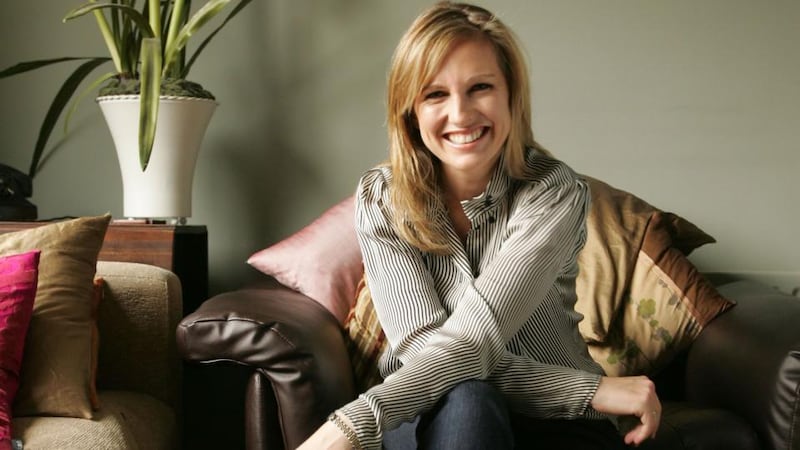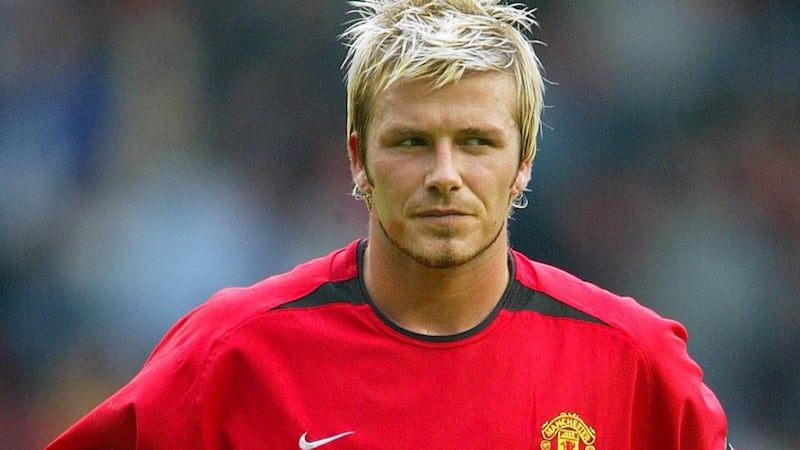Next time you are on a dancefloor or queuing in a bank, do a headcount of the women. The heads will merge into one many-headed dyed blonde. Highlighting and peroxiding is prohibitively expensive, bad for hair, and kills time. So why are so many Irish women blonde?
We have heard the idioms, from the grating “blondes have more fun”, to the insulting “ditzy blonde” of the bombshell caricature, to the flattering “gentlemen prefer blondes”, and the sinister “blondes make the best victims – they’re like virgin snow that shows up the bloody footprints”.
The last is a quote from Alfred Hitchcock, and tells us more about typecasting than Irish conventions, but it does suggest there is a compelling innocence to being blonde. A recapturing of youth, even.


A canvassing of blondes and hairdressers revealed contradictory reasons for undertaking a costly procedure. Among these were not wanting the “mousy” hair most men make do with, finding a colour to suit pale Irish skin, covering grey hair, fitting in, wanting to stand out, and wanting to look like a Victoria’s Secret model.
Flaxen-haired chef Domini Kemp went brunette once. "I got fed up with having to get it dyed. I thought it would be much less maintenance. I didn't feel like myself, however. I looked miserable," says Kemp. "Look at kids – when they have blonde hair they always look so natural and lovely. I hate that it looks so artificial, but I do think it catches your eye more."
Rachel (30), a theatre producer, says she "probably wanted to look like the girls in Friends" when she first got highlights at 14. "Everyone had started experimenting with make-up and hair. I never did drastic stuff with my looks, so I went for the most subtle colour, not drawing attention to myself. Blonde didn't seem too wild."
It takes Rachel 2½ hours to get full highlights and a cut at Dylan Bradshaw on South William Street in Dublin. She goes every three months, and with cut and style it costs her €300. Full highlights cost €200. To return every six weeks, as the most committed client does, adds up to €1,600 a year.
Following fashion
Hairdressing follows fashion, and at this time of year blondes return to the covers of magazines, and blonde is laid on thicker in the salons. Gillian (40), a waitress, and a "balayage" or "swept" (painted-on) caramel blonde, says: "Every hairdresser says to me, 'We'll brighten you up for the summer, and then bring it down for the winter'. I am a victim of giving up the quality of my hair to be blonde – because people tell me it suits me. I get a lot more comments when I'm blonde."
Paul Davey of Davey Davey hair salon on Drury Street estimates 70 per cent of his female clients are blonde. Colour choice has nothing to do with economic fortunes, according to Davey, who has been working as a hairdresser in Ireland for 20 years.
“I don’t believe blonde hair is less prevalent in recessionary times. We are fashion interpreters and hair creators, and whoever is wearing blonde at the time reflects on tastes. If Miley Cyrus goes blonde, overnight you have women coming in asking for blonde.” The blondes most often on the magazine clippings that are handed to him are Sarah Jessica Parker, Jennifer Aniston, Kate Moss, Gisele Bündchen and Victoria’s Secret model Lily Aldridge – the latest “girl crush”, says Davey.
“Blondorexia” is not a savoury term, but it’s one any hairdresser will tell you about. It means a desire to be blonder and blonder. For most Irish women, it’s variegated streaks. “There’s a huge spectrum,” says Stephen Doyle, hair technician at Davey Davey. He lists a confectioner’s array of flavours: “Toffee, caramel, cappuccino, golden, mocha, honey, beige, vanilla blonde, platinum.”
There is a panoply of techniques to choose from. The more uniform result of foil highlights is slightly less hot right now than the artisan balayage and ombre – lighter at the tips.
'Part of my identity'
Rosanna Davison got her first highlights at 16 and now has a full head of them, with colour topped up every five weeks. She believes it has contributed to her success as a model. "When I won Miss World it was part of my contract that I couldn't change my hair colour for a year. It then becomes part of your identity. People may have associated me with blonde hair, and if I'd changed my hair colour drastically maybe it would have affected my career negatively," she says.
Like Kemp, she went brunette and hated it, in 2008. “I had more fun as a blonde. I feel like it suits me better, I feel more confident with it,” says Davison.
Claire O'Donnell at Queen salon on Dublin's Aungier Street says men are not immune. "When David Beckham was at his peak, men were coming in for highlights. Now beards are the trend."
That the hair colour is fundamentally altered requires exhaustive maintenance. “The cuticle needs to be pushed open to change the pigment of the hair. Changing the structure of the hair causes damage to it. Conditioners and masks with keratin and protein are then needed to close the cuticle,” she says, before playfully urging me (a committed brunette) to go blonde.











